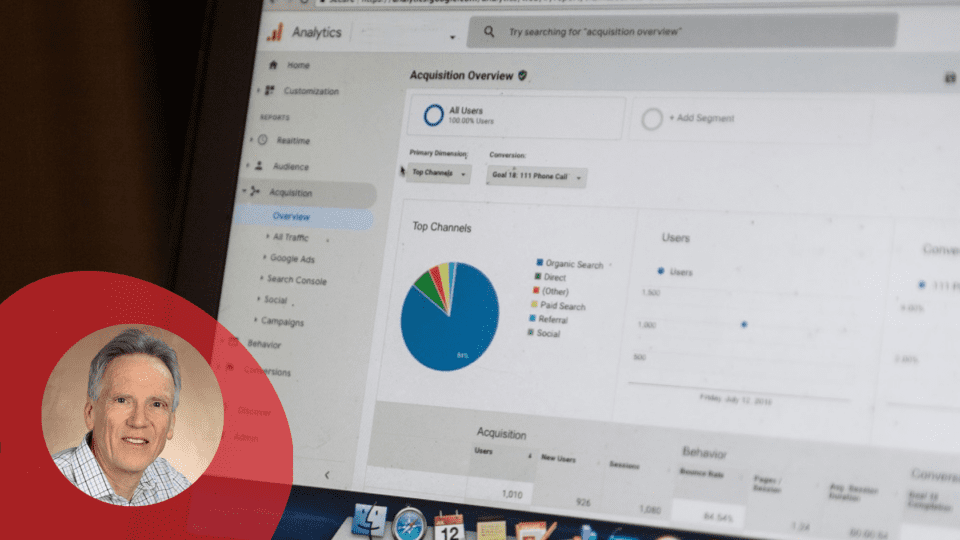Ecommerce brands that have been resisting Google’s gentle nudges toward data-driven attribution can no longer drag their feet.
The tech titan has eliminated all but two attribution models: last-click and data-driven. This decision has major ramifications for brands and retailers. Companies that have been using non-last-click rules-based attribution models (namely first-click, linear, time decay and position-based) need to understand what options are now available and how this choice reflects a broader shift in marketing attribution.
Here’s why Google is deprecating these models, how the move affects ecommerce companies and what brands and retailers should do to respond.
What’s the Change — and Why?
Google’s deprecation of first-click, linear, time decay and position-based models means that the only rules-based attribution model companies will have access to is last-click, which gives credit to the last touch point in the customer journey for a conversion. Any conversion action using the deprecated attribution models will automatically convert to data-driven attribution (DDA). Last-click will remain available — but companies will have to adopt it manually.
Advertisement
In other words, DDA based on machine learning is now the recommended and default model.
Google has cited increasingly low adoption rates as the reason for this decision to sunset rules-based models, as “less than 3% of Google Ads web conversions are attributed using first click, linear, time decay or position-based models.” But what accounts for these low adoption rates?
DDA and machine learning (ML) are more reflective of what is actually occurring on ecommerce brands’ websites. Most rules-based models overvalue certain touch points while undervaluing others — for example, first-click disregards other touch points on the customer journey, while position-based overvalues first and last clicks while undervaluing intermediate touch points.
What Does Google’s Change say About the Future of Attribution?
This change reinforces what many (including Google) have been saying for some time: data-driven attribution through machine learning is the future — or, at the very least, the model many, if not most, ecommerce companies will use as a default going forward.
Data-driven modeling gives brands a better idea of the real weighting of various channels in their marketing campaigns, providing a more realistic view of what’s happening on their sites than heuristic rules-based models (like time decay or linear) that operate on a “best guess” basis. Any disruptions of current practices for ecommerce companies aside, we should look at the model deprecations as a sign that DDA and ML are working, effectively pushing the envelope as intended to the point that old models are being rendered obsolete.
But there’s a flip side to this of which ecommerce brands should take note. Ironically, by forcing brands to use DDA, Google is also revealing the downside of relying on walled gardens for attribution. What the walled gardens giveth, they also taketh away. If you rely exclusively on Google or Amazon for marketing measurement, they decide how you view your data — not you.
The choice to include first-click in the list of deprecated rules-based attribution models is a good example of the double-edged sword that is ceding control to services like Google Analytics or Google Ads.
It’s true emphasizing data-driven models at the expense of rules-based models is smart. A major problem is that first-click has applications (like showing the power of certain channels or campaigns in attracting first-time users) that shouldn’t be overlooked. Relying on Google means giving up that option.
What can Ecommerce Companies Learn — and What Steps Should They Take?
Given the wide usage of Google Analytics and Google Ads, many ecommerce brands will be impacted by Google’s removal of these rules-based attribution models. For those companies, the question is what to do next.
First, ecommerce companies should analyze what they’re losing and how the decision affects their ability to understand the impact of their marketing channels. For example, if they will no longer be able to measure attribution by first click, will they lose an understanding of what channels first attract customers to their site? If so, how critical is that information, and if it is important, what tools will they use to regain that understanding?
Secondly, ecommerce companies should investigate whether their monthly conversions and interactions meet Google’s minimum requirements for conversions and ad interactions to be eligible for using DDA. If not, they will have to use last click with no access to a multi-touch model. This is a significant downside.
In conclusion, brands should seek to better understand data-driven attribution and explore their options for adopting a machine learning-based multi-touch model. While the loss of certain attribution models may be challenging, independent attribution platforms can fill this void. But the future of attribution modeling is data-driven, and ecommerce companies that accept this change and adapt accordingly will be better positioned than competitors that cling to models so obsolete that they’re being deprecated altogether.
Phil Dubois is the CEO and Co-founder of AdAmplify, a provider of the next generation of marketing attribution software. Used by online stores, AdAmplify’s software shows which channels and campaigns are working, which aren’t, and where there’s opportunity for growth. Driven by machine learning, Dimensions highlights trends, interprets results and projects the future revenue potential of a store’s marketing channels.




